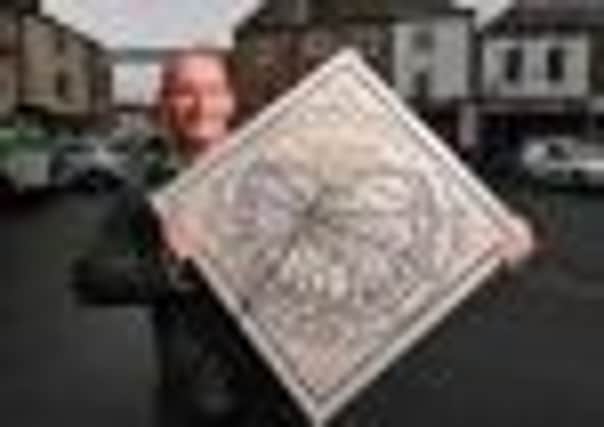High time for sundial maker to step out of shadows


Now a public sundial, using an original design from Watson’s own notebook, has been unveiled in Pocklington, in tribute to his work and the impact he had.
It has been made by Yorkshire-based Stephen Holehan, who believes he is the region’s only remaining professional sundial maker.
Advertisement
Hide AdAdvertisement
Hide AdThe sundial has been placed on the gable end of a butcher’s shop in George Street, Pocklington and a detailed information board also has been put up to mark Watson’s legacy to the area.
Phil Gilbank, of the Pocklington and District Local History Group, which has organised the tribute, said: “We saw it as an opportunity to create something special and to give Watson the recognition that he deserved.
“He has not really gained the recognition that he deserved in more recent times so we are hoping what we have done in Pocklington goes some way to putting that right.”
As well as designing sundials, Watson, was a local farmer, surveyor, map maker and astronomer.
Advertisement
Hide AdAdvertisement
Hide AdSeveral examples of his original work are still to be seen in the neighbourhood.
He was born in Seaton Ross, near Market Weighton, in 1784, the child of local farmer John Watson and his wife Sarah.
The early days of enclosure required land surveys and maps and Watson became proficient at surveying for the family’s landlords, the Constable Maxwells of Everingham.
He also had a keen interest in sundials, and in 1854 wrote a book called Dialling Diagrams published by Forth’s of Pocklington. In it he claimed to have discovered a new way of calculating the meridian, which was crucial for all sundial makers.
Advertisement
Hide AdAdvertisement
Hide AdHe was one of a group of notable self-taught 19th century astronomers from in and around Pocklington, which included Thomas Cooke, William Rogerson, John Smith and William Richardson.
Watson was also a member of Pocklington’s Institute for Improvement in Science and Literature, founded in 1849, and chronicled in remarkable detail in his notebooks and diaries a host of scientific observations and calculations, local measurements and distances, weather records and reports on local events.
Mr Holehan, of Sherburn in Elmet, near Leeds, said of Watson: “What is interesting is that he was not particularly well-educated.
“When Phil Gilbank called me I have to say that I had not heard of him, which is one of the reasons they wanted to get this made.
Advertisement
Hide AdAdvertisement
Hide Ad“I think its a great shame he is not more widely known and that’s the main reason that I decided to do this because its a great shame that somebody like this has been forgotten about.”
Watson erected a number of dials in Pocklington, many of which have not survived, although there is a sundial near the church porch which it has been suggested is an early example of his work. This would have been used to regulate the church clock in Victorian times. A few remaining examples of his dials can be found across the county.
Mr Holehan believes Watson is likely to have used to stone to craft his sundials and in some cases wood.
However, Mr Holehan’s design is made from Corian, often used for kitchen work surfaces, and he only charged expenses to create the work as he was so intrigued by the project.
Advertisement
Hide AdAdvertisement
Hide AdWatson’s great legacy is also in his detailed maps. In 1838 he left Seaton Ross, and in 1844 drew his first plan of Pocklington while living in West Green, showing the town prior to the arrival of the railway.
He moved on to live and draw further maps in Market Weighton and York, and his maps were exhibited in London in the Great Exhibition in 1851. Watson ended his days in Pocklington, creating his finest plan of the town in 1855.
It is a remarkable work which not only gives the names of the householders but accurately shows the windows, doors and front elevations of every house.
He also recorded on the map where he lived, in George Street, a few doors up from where the replica sundial has been placed.
Advertisement
Hide AdAdvertisement
Hide AdWatson was buried in Seaton Ross in 1857 and his gravestone states: “At this church I so often with pleasure did call, that I made a sun-dial upon the church wall.”
The Pocklington and District Local History Group says the sundial on Seaton Ross church is dated 1824.
Mr Gilbank says he hopes more people will now realise the importance of Watson’s work, giving him: “the recognition that he deserved”.